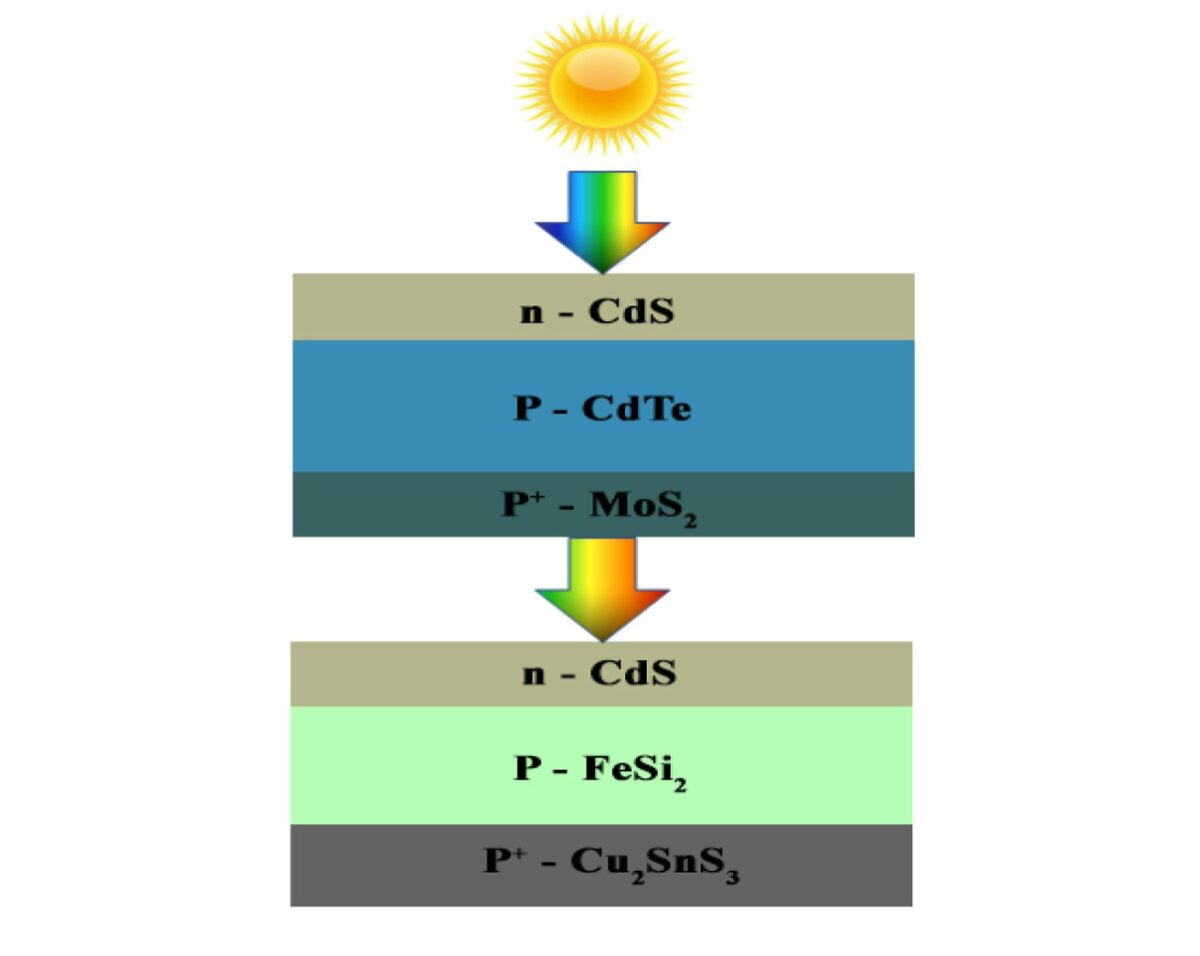Researchers at the University of Rajshahi in Bangladesh have simulated a dual-junction tandem solar cell based on two PV devices reyling on absorbers made of cadmium telluride (CdTe) and iron disilicide (FeSi2).
Inorganic FeSi2-based solar cells have recently drawn a lot of attention from the scientific community as these devices offer superior thermal stability and good optoelectronic properties compared to conventional solar cells. Furthermore, Fe and Si used to form FeSi2 are abundant in nature.
The scientists explained that their tandem cell takes advantage of combining the larger bandgap of the top CdTe cell and the smaller bandgap of the bottom FeSi2 cell. “The top cell transforms photons with elevated energy efficiently while minimizing thermalization losses and transmitting the solar spectrum in the close-infrared region light to the lower cell,” they highlighted. “In order to improve light absorption, it is crucial to reduce the undesired losses at the junction resulting from Fresnel surface reflection.”
The scientists used the SCAPS-1D solar cell capacitance software, developed by the University of Ghent, to simulate the novel cell configuration. They assumed the top cell to be built with an n-type cadmium sulfide (CdS) window layer, the CdTe absorber, and a back surface field (BSF) based on molybdenum disulfide (MoS2). The bottom cell was designed with an n-type CdS window layer, the FeSi2 absorber, and a copper tin sulfide (Cu2SnS3) BSF.
In the simulation, the team considered parameters such as energy bandgap, diffusion length, and doping concentration. “CdTe has featured a 1.5 eV bandgap and a 4.28 eV electron affinity, while the bandgap and electron affinity of FeSi2 are 0.87 eV and 4.16 eV, respectively,” it specified. “An optimal, slender tunnel junction connecting the upper and lower cells with monolithic architecture has been assumed for the electrical linkage.”
Popular content
The numerical analysis showed that the top CdTe cell may potentially achieve a power conversion efficiency of 26.13%, while the FeSi2 bottom cell may reach up to 35.25%. It also demonstrated that the tandem device may achieve an efficiency of 43.91%, an open-circuit voltage of 1.928 V, a short-circuit current of 25.338 mA/cm2, and a fill factor of 88.88%.
“These results suggest the practical feasibility of fabricating high-performance CdTe–FeSi2 double-junction tandem solar cells for efficient solar energy conversion,” the scientists affirmed.
The cell was described in the study “Design and optimization of a high efficiency CdTe–FeSi2 based double-junction two-terminal tandem solar cell,” published in Heliyon.
This content is protected by copyright and may not be reused. If you want to cooperate with us and would like to reuse some of our content, please contact: editors@pv-magazine.com.



1 comment
By submitting this form you agree to pv magazine using your data for the purposes of publishing your comment.
Your personal data will only be disclosed or otherwise transmitted to third parties for the purposes of spam filtering or if this is necessary for technical maintenance of the website. Any other transfer to third parties will not take place unless this is justified on the basis of applicable data protection regulations or if pv magazine is legally obliged to do so.
You may revoke this consent at any time with effect for the future, in which case your personal data will be deleted immediately. Otherwise, your data will be deleted if pv magazine has processed your request or the purpose of data storage is fulfilled.
Further information on data privacy can be found in our Data Protection Policy.